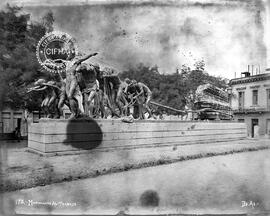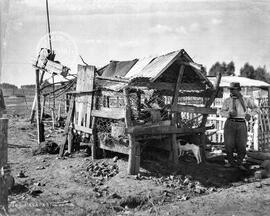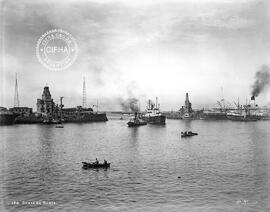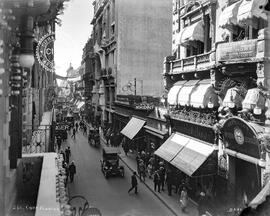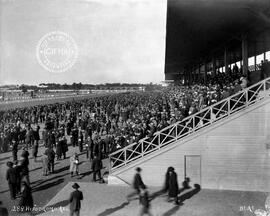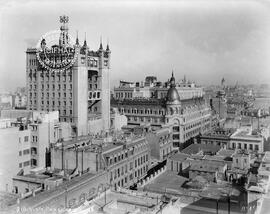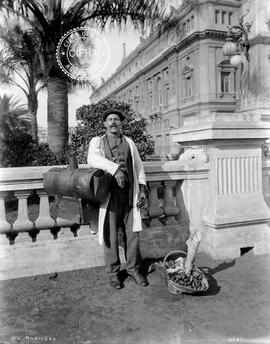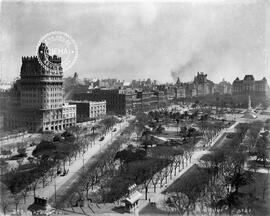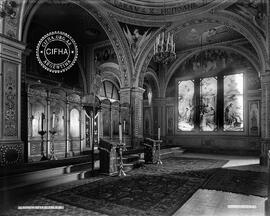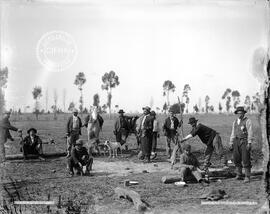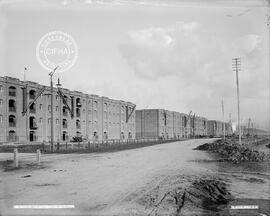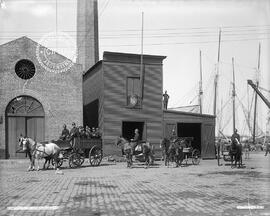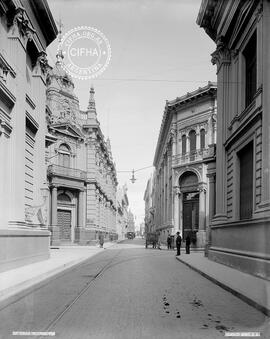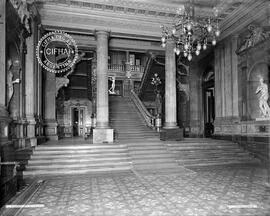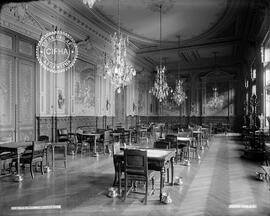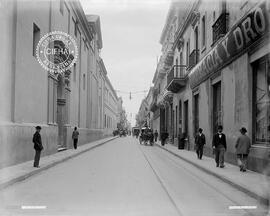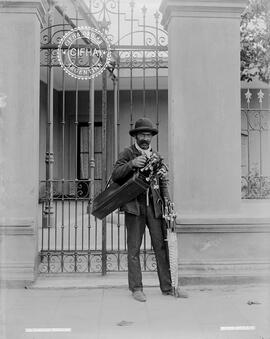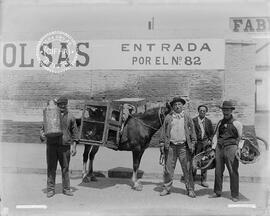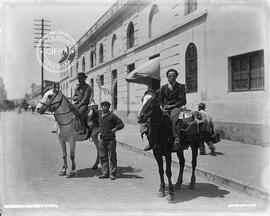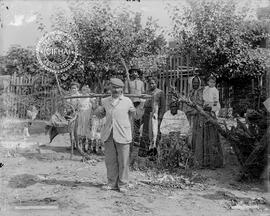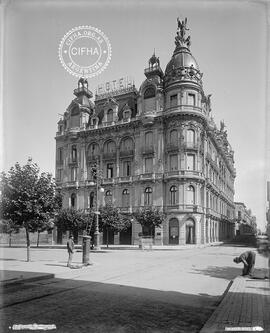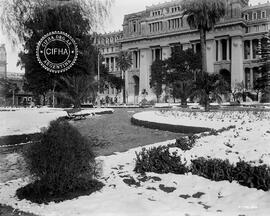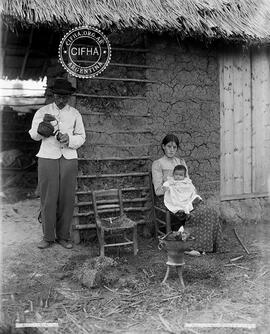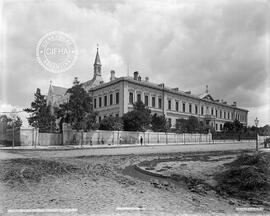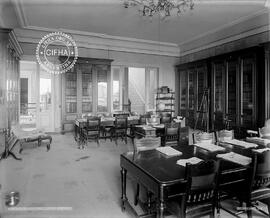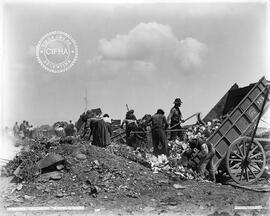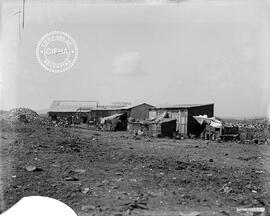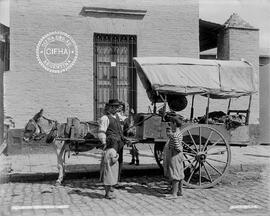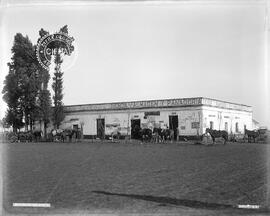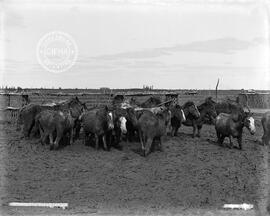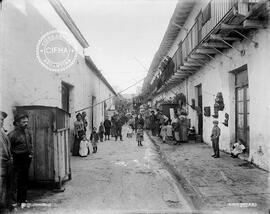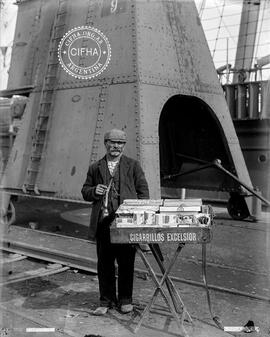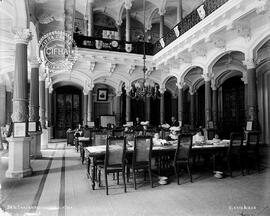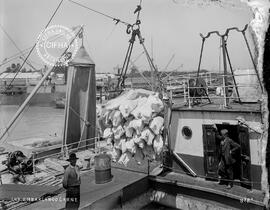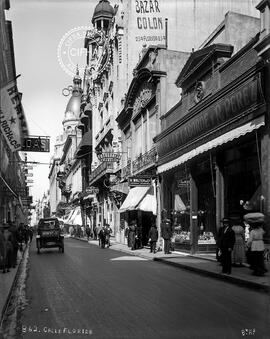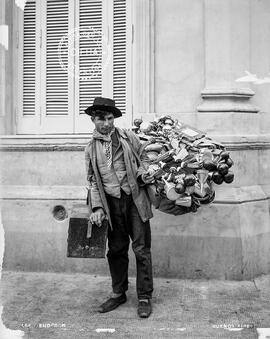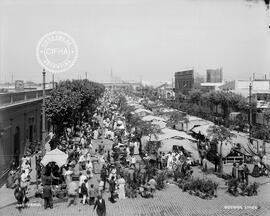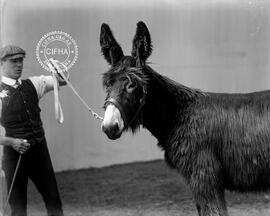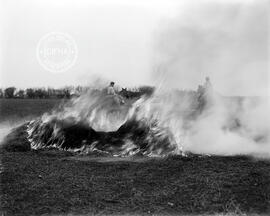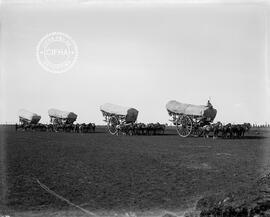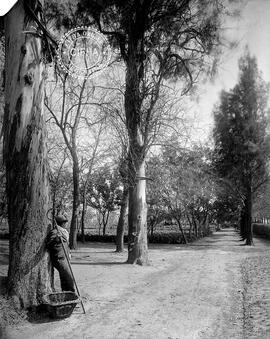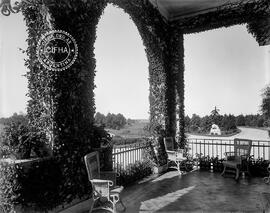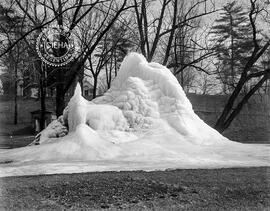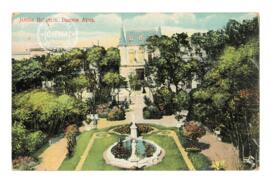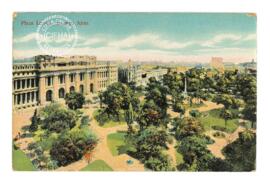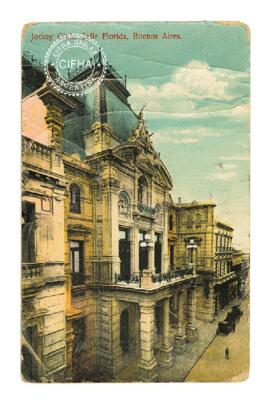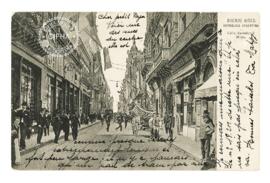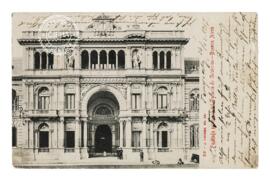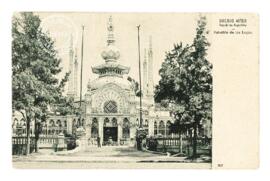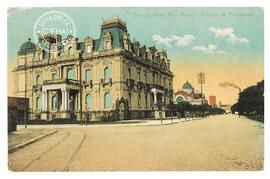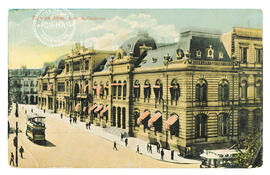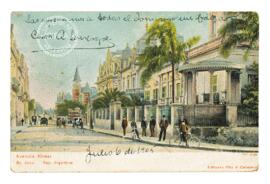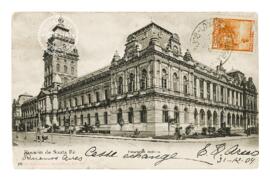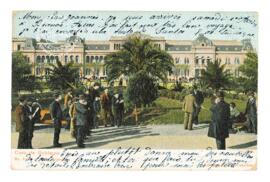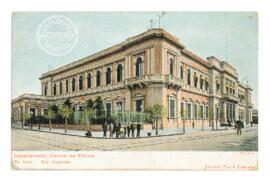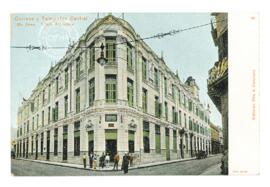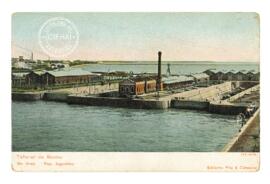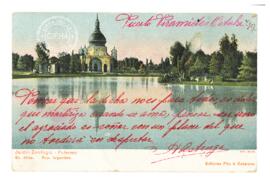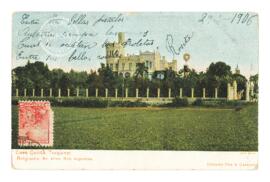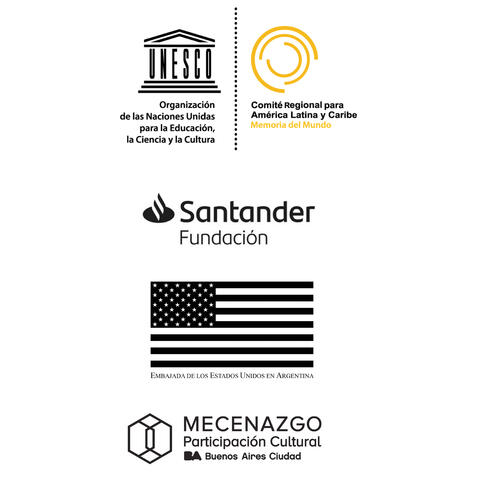
Identity area
Reference code
Title
Date(s)
- 1870-1943 (Creation)
Level of description
Fonds
Extent and medium
5 linear meters, approximately
Context area
Name of creator
Biographical history
Harry Grant Olds, son of Harrison Grant Olds and Georgina Judd Apthorp, was born on October 3, 1868 in the United States, in the port city of Sandusky, on Lake Erie (Ohio). In 1885 he began his photographic career as an apprentice in the studio of W. A. Bishop, located in his hometown. The following year, the studio became part of Clayton W. Platt's Platt Photographic Gallery. Then, in 1887, Olds moved to Palmyra, New York, to continue his training with famed photographer G. M. Elton. The following year he returned to Sandusky to work with Bishop at the Platt Gallery. He had the idea of saving money to start his own photographic studio. In 1893 he met Rebecca Jane Rank, his future wife, in Mansfield. That same year he was called up to join the ranks of the Ohio National Guard as a result of the national mining strike at Wheeling Creek. In 1894 he partnered with Albert Willman and they founded the firm of Olds & Willman with two facilities: one in Mansfield, Ohio, managed by Olds, and the other in Sandusky, managed by Willman. During the 1890s Ohio suffered a severe economic depression. In this context, around 1897, Olds received a letter from his uncle John Apthorp in which he referred him to a job possibility in Valparaiso and Santiago de Chile. It so happened that E. C. Spencer, an American living in Chile, was looking for a photographer who was up to date to work in his studio. Olds accepted the offer and agreed to a three-year contract with Spencer to work as operator and general assistant in the photography business. After communicating his decision to Willman, he sold the Mansfield photographic gallery. However, in late 1898 or early 1899, Spencer informed Olds that he could not fulfill the agreement, so Olds contacted Scovills & Adams, a New York photographic supply company, to inquire about possible work in Chile or Argentina. He was referred to Odbe W. Heffer, who managed Helsby's Corner photographic studio, the original daguerreotype shop, in Santiago, Chile. Olds left for South America on July 1, 1899 on the ship Buffon. He carried 4x5-inch photographic equipment and 200 dry plates. His trip was profusely photographed and described in letters to his family. He also made a record of notes on each photograph he took. In Brazil, he passed through Bahia and Rio de Janeiro and on July 29 he disembarked in Buenos Aires, from where he planned to travel to Chile. However, the crossing of the Andes was interrupted, so he had to travel to Montevideo and from there to Chile by ship through the Beagle Channel. He left on August 5 on the steamship Orcana, of the Pacific Mail and on August 20, 1818, he was transferred to Chile where Heffer received him. From the beginning of his stay, he perceived the character of his new employer as difficult, which he comments on in his letters to his family. He also refers to his willingness to acquire knowledge and experience, in order to later become independent. At the same time, both Heffer and Olds himself were very satisfied with the quality of their work. To his surprise, on December 7, 1899, he received a letter from Heffer informing him of his decision to terminate the employment relationship for financial reasons within six months. Faced with this circumstance, he decided to ask his uncle John for a loan to set up his own commercial photography business in Buenos Aires. He had considered that there were not many such ventures there, so it would be a good opportunity. At the end of March 1900 he arrived in Buenos Aires, having crossed the Andes Mountains by mule. Once he received the order for the photographic materials, on August 5 he made his first negative in Argentina. By December he was already in full development of his work. Two years later he summons his fiancée Jane Rank to Buenos Aires, where he arrives on May 12, 1902, to be married immediately. In Chile he had begun a series of photographs that he called his “general collection”, similar to what is known as a current image bank.
In 1901 he already had more than 350 negatives. For this series he traveled to different regions of Argentina. He portrayed views of natural landscapes and towns, popular types and scenes of customs. That year he was already receiving commissioned work from Argentine companies, such as Casa Drysdale, La Martona, views of estancias and the Sociedad Rural. He also received orders from the government. His images were published in postcards and newspapers thanks to the new photomechanical printing technologies. He was mainly dedicated to institutional, advertising, landscape, documentary and journalistic photography. Thanks to his work, Olds had achieved a good professional position in Argentina. There are indications that he returned to the United States several times with his wife. Harry Grant Olds died of cirrhosis on December 24, 1943 in Buenos Aires. The disease had left him prostrate for the last two years of his life. He left as a legacy a valuable record of South America in the late 19th and early 20th centuries, through the eyes of an American photographer.
Archival history
The Harry Grant Olds collection has two distinct origins. On the one hand, the photographic documents corresponding to the commercial work carried out by Olds in Argentina at the beginning of the 20th century. These were kept by Mateo E. “Cacho” Giordano and sold to Alfredo Srur in 2013. On the other hand, the so-called “North American trunk” containing photographic documents, correspondence and personal writings of Olds concerning his life in the United States, Chile and his early years in Argentina. This trunk was preserved by the American John Waldsmith and donated to CIFHA in 2014. To the H. G. Olds documentary collection is added a set of documents corresponding to research on Olds' life and work carried out by those people who were in contact with the personal archive: John Waldsmith, Mateo Giordano, Abel Alexander, Luis Príamo and Alfredo Srur.
Harry Olds began assembling his Latin American archive, image bank style, in 1899 while living in Valparaiso, Chile. He began numbering this set of photos with the number 1 and continued it later in Argentina. A series of 40 negatives from his stay in Chile (although 13 more are missing due to the numbering) were sold by Mateo Giordano and are currently in the National Historical Museum of Chile. The rest of the photographic negatives were produced in Buenos Aires, where his first commercial premises were located, at 412 25 de Mayo Street (1907), and later moved to Lavalle 1059 (1915) to later end up in the premises of Lavalle 1362 (1937). This series of photographic negatives on glass plate had the particularity of avoiding the gallery portrait and focusing on the photography of landscapes, customs and popular types. It is believed, by the numbering of the plates, that the collection consisted of no less than 5,000 units, of which 4,000 are missing.
After Olds' death in 1943 the archive was sold by his widow Rebecca Jane Rank to José Zupnik, H.G. Olds' last apprentice and collaborator. The number of plates in the archive numbered 2,000, including nitrate glass and paper copies, ranging from his first photographs in Valparaiso, Chile, in 1899, to his last Argentine photographs of the late 1930s. Nothing is known of the 1,000 missing plates from the original archive. José Zupnik moved this archive from his office in Tribunales to his home in Villa Crespo in 1943. For approximately 35 years it remains stored in the attic of a small room in the upper part of his house.
Mateo Giordano, a friend of Bernardo Zupnik (José's son) heard about this archive in the 1960s, when he was his father's photography student. Years later, in June 1977, he discovered through a classified ad in the Clarín newspaper that “an important old photographic archive of Buenos Aires” was for sale. He recognized the phone number as that of his former teacher Zupnik and made the purchase. Between 1977 and 2013, the archive was in Giordano's different houses, without any kind of conservation treatment. In the 2000s, Carlos Dellepiane, a collector friend of Giordano's, put him in contact with Luis Priamo and Abel Alexander, the most important historians of old Argentine photography. From that connection arose the first reconstruction of the archive and the elaboration of a book on Olds edited by Fundación Antorchas.
In August 2013 Alfredo Srur bought the archive of photographic negatives from Mateo Giordano. The photographs were inside polypropylene bags and in boxes inside wooden crates. At some point, Giordano had traded the wooden paper envelopes written by Olds for the polypropylene bags. Srur moved the archive to his home in La Boca (CIFHA's current headquarters) and between 2013 and 2014, the documents were cleaned and stabilized with temperature and humidity control and stored in a stainless steel cabinet. They were also arranged according to the original labeling that H.G. Olds had put on them.
Regarding the origin of the American trunk we know that after Olds' death in 1943 Mrs. J. Harry Craig little is known.
Rank sent this trunk to the United States, to her sister, shortly after her husband's death.
Regarding the American trunk, we know that in 1980 John Waldsmith, who worked at the Oliver Wendell Holmes Stereoscopic Research Library of the National Stereoscopic Association, received a phone call from a lady from J. Harry Craig, who told him that she had in her possession since 1943 the archive of a photographer named Olds and that she wanted to donate it to the institution. Waldsmith went to see the trunk, which contained the letters Olds had exchanged with his family and friends from his years as a student photographer in Detroit to his early years in Argentina, a ferrotype taken of Olds at age 15 as an apprentice photographer in Sandusky's first studio, the manuscripts of his early years in Argentina, his diaries as an apprentice photographer at Sandusky's first studio, the manuscripts of his early years in Argentina, his diaries as an apprentice photographer at Sandusky's first studio, and his manuscripts of his early years in Argentina, his diaries as an apprentice photographer in the late 19th century in the United States, vintage photographs he took aboard the ship that brought him from New York to South America, several glass negatives taken in his hometown, ferrotypes taken in the first photographic studio where he worked in Sandusky, and other personal items and glass plates of his parents. Also in the trunk was Olds' obituary published in the press in 1943.
It is not entirely clear how that trunk had come into the hands of Mrs. J. Harry Craig, but from further research we know that the lady's name was Adelaide C. Snapp (10/8/1898 Mansfield, Ohio - 2/9/1997 Franklin, Ohio) and that she was married to Olds' nephew James Harry Craig, who was the only son of Rebecca J. Rank's sister Minnie's first marriage. We do not know if that trunk was given to them by Olds' widow, Rebecca, from Argentina or if it came to them from some other relative. What is certain is that it was kept by Harry Craig's wife for 37 years in perfect condition. However, as the material was part of the work of a photographer unknown at the time, and not of the stereoscopic type, as the Oliver Wendell Library specialized in, no one paid much attention to it, except for Mr. Waldsmith who undertook a preliminary cataloging and research.
In the late 1990s, Abel Alexander and Luis Priamo were making a collection of books of old Argentine photography and by chance came across the story that Waldsmith had uploaded to the Internet telling the story of the trunk. They contacted him and he provided all the material for their study in Argentina. The day after the purchase made by Alfredo Srur from Cacho Giordano, in 2013, Srur manages to contact Waldsmith. He informs him that the Oliver Wendell Holmes Stereoscopic Research Library had closed a few years earlier and that the documents in the trunk were at his home. In March 2014 Srur travels to the United States, to Cleveland, to meet with John Waldsmith. The latter tells him that in the trunk there was also a white cotton blanket, probably indigenous, perhaps from a trip to the Gran Chaco and there was also some kind of axe. Both items had been lost. In addition, Olds' collection of magic lanterns (old slides) had been sold by some member of the Oliver Wendell, prior to its closing, to a Japanese collector that Waldsmith was never able to locate again. Everything else was in perfect condition. The trunk with its contents was donated to Alfredo Srur to be reunited with the rest of the collection.
At the beginning of 2020, CIFHA began the archival treatment of this documentary section. It allocated financial resources so that a group of professionals could begin to gather all the information available on Olds in general and on the trunk documentation in particular, with the aim of identifying, organizing, systematizing and making this information accessible.
Immediate source of acquisition or transfer
Purchase (2013) and donation (2014).
Content and structure area
Scope and content
The fond is divided into three main sections. The first one refers to the “North American trunk” and the second to the commercial work in Argentina. The first section contains Olds' correspondence with his parents and friends between 1876 and 1904, family photographs and photographs of his early work in the United States, glass plates, ferrotypes and albumen prints. Also notebooks, a personal diary, hundreds of positive photographs on paper with records of his initial 1889 trip between New York and Valparaiso.
With respect to his commercial work in Argentina, two major groups can be distinguished in his professional work: on the one hand, commercial and institutional photography on commission, and on the other, the “general collection”. The latter consists of a series of images that Olds took at will and then offered for sale. These negatives on glass and cellulose nitrate plates Olds organized them in the manner of what we know as an image bank. This was identified in five different ways. In his first period, from about 1899 until late in the first decade of the twentieth century, he pasted a thin strip of translucent paper over the emulsion; from 1915 onwards he seemed to engrave the letters in red, also on the emulsion side, and later he used India ink with a neat freehand typography. These three ways correspond mostly to what are called types and customs, which include views, portraits and scenes. Clearly differentiated is the other part of the commissioned archive, which is a record of the Argentine countryside at the beginning of the 20th century. Here Olds labeled the negatives, using in some cases numbering done with a sharpie and in others, red ink. Some of these plates have up to three different numbers at the base of the image.
The third section gathers documentation on Harry Grant Olds gathered by the various owners of the archive and researchers who consulted it. It is worth mentioning a collection of postcards gathered by John Waldsmith and Alfredo Srur with photos of Olds.
Appraisal, destruction and scheduling
No expurgences are foreseen.
Accruals
System of arrangement
The fond is classified in: 1 Section: Documents from the North American Trunk 1.1 Series: Correspondence 1.2 Series: Photographs 1.3 Series: Photographic record of the trip New York - Valparaiso, 1899 1. 4 Series: Notebooks 2 Section: Commercial work in Argentina 1900-1943 2.1 Series: Photographs on glass plate 2.1.1 Subseries: Described with pasted paper strips 2.1.2 Subseries: Described with red ink 2.1.3 Subseries: Described with black ink 2.1. 4 Subseries: Described with punch and red ink 2.1.5 Subseries: Described with etching on glass 2.2 Series: Cellulose nitrate photographs 2.3 Series: Panoramic photographs 2.4 Series: Photographs on paper 3 Section: Olds Research and Archives 3.1 Subsection: Research and Materials Mateo Giordano and Luis Príamo 3.2 Subsection: Research and Materials Abel Alexander 3.3 Subsection: Research and Materials Alfredo Srur 3.3.1 Series: Olds postcard collection 3.3.1 Series: Olds postcard collection.
Conditions of access and use area
Conditions governing access
Conditions governing reproduction
Language of material
Script of material
Language and script notes
Physical characteristics and technical requirements
Finding aids
Allied materials area
Existence and location of originals
-
In the Archivo General de la Nación (Argentina) there are original copies of Olds with his name and address stamped on the back.
-
The National Historical Museum of Chile has 40 8x10 inch glass plate negatives of shots of Valparaíso (these were sold by Cacho Giordano to Fundación Antorchas de Chile and later donated by this foundation to the Chilean government).
-
The Getty Museum owns an album by H. G. Olds entitled “Vistas de Bs as y del campo”, with 24 photos in silver gelatin and stamped with his studio's seal: H. G. Olds / Lavalle 1059 Buenos Aires. Available at: https://primo.getty.edu/primo-explore/fulldisplay?vid=GRI&context=L&lang=en_US&docid=GETTY_ROSETTAIE9624994
Existence and location of copies
Related units of description
Publication note
Books and articles:
-
H. G. Olds : photographs : 1900-1943. Fundación Antorchas, Buenos Aires, 1998.
-
Valparaíso. Harry Olds. Photographs: 1900. Diego Portales University Foundation, 1998.
-
Rocchi, Fernando; Waldsmith, John; Alexander, Abel and Priamo, Luis. H. G. Olds : Fotografías 1900-1943 : un norteamericano retrata la Argentina. Buenos Aires: Ediciones de la Antorcha, 2011.
-
Finkel, Jori. How a man from Ohio became one of Argentina's greatest 20th-century photographers. 25 August 2023.
-
H. G. Olds. Mirrors of silver. CIFHA Foundation, 2024.
Exhibitions:
-
The Foreigner, by H. G. Olds. Gallery 1101 Fotoespacio, CIFHA Foundation, 2023.
-
Olds - Srur - Silver Mirrors. FOLA, November 2017.
Documentaries:
-
H. G. Olds´ Journeys. CIFHA Foundation, 2024. https://www.youtube.com/watch?v=LyKtUUPnnEs
-
H. G. Olds in the Gran Chaco, the American photographer and the Qom community, a century later. CIFHA Foundation, 2024. https://www.youtube.com/watch?v=a5mK6MXQGv0
H. G. Olds published his work in the magazines:
-
Caras y Caretas. Buenos Aires. 1898-
-
The South American Illustration. Buenos Aires: Argos, 1892-
-
Argentine Rural Society. Annals.
-
Lloys, Reginald. Impressions of the Argentine Republic in the twentieth century : its history, people, commerce, industry and wealth. London: Lloyd's Greater Britain Publishing, 1911.
-
Stephens, Henry. Illustrated Descriptive Argentina. The Knicker- bocker Press: New York, 1917.
Notes area
Alternative identifier(s)
Access points
Subject access points
Place access points
Name access points
Genre access points
Description control area
Description identifier
Institution identifier
Rules and/or conventions used
The ISAD (G) and ISAAR (CPF) standards were used for the description.
Status
Level of detail
Dates of creation revision deletion
The description process began in 2020. It was continued between 2022 and 2024 by archivists Juan Luis Besoky and Paula Fridman. The description was made in English and Spanish.
Language(s)
Script(s)
Sources
Digital object metadata
Filename
Logos_ATOM_Olds.jpg
Latitude
Longitude
Media type
Image
Mime-type
image/jpeg



